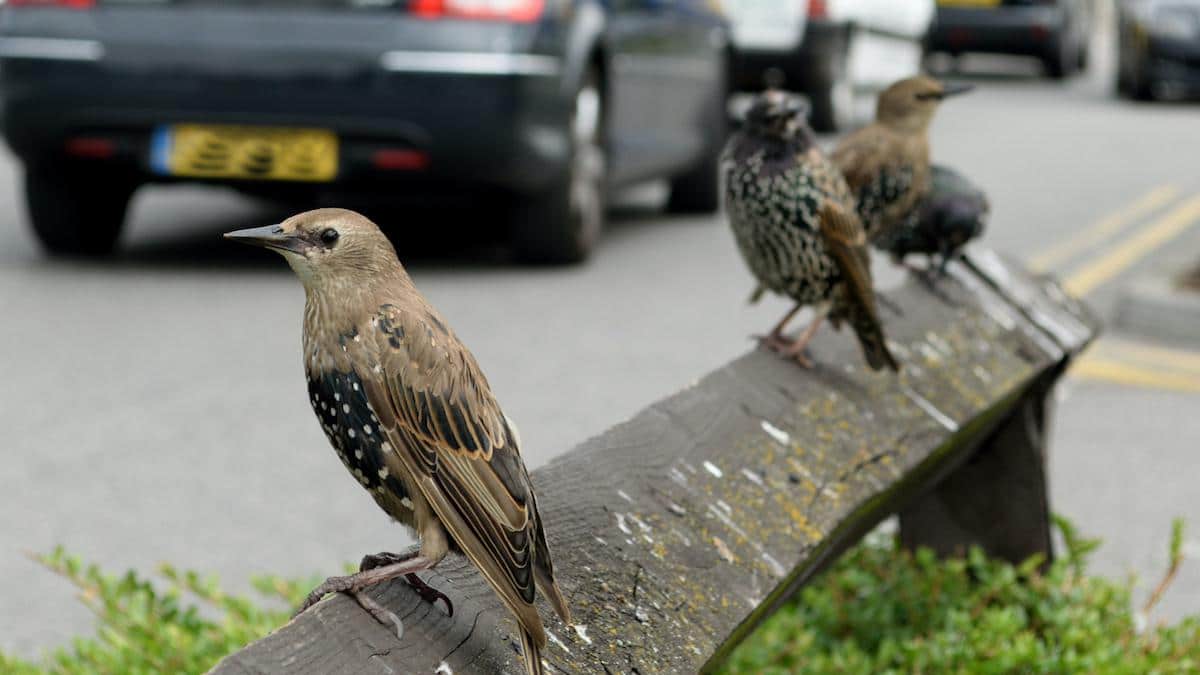

Traffic noises can impair the ability of songbirds to learn skills, a new study finds. savoilic / iStock / Getty Images Plus
If you’ve ever had a hard time thinking when a noisy truck rattles by, you’re not alone.
A study published in the Proceedings of the Royal Society B Wednesday found that traffic noises can impair the ability of songbirds to learn. In some cases, birds took twice as long to figure out new skills when listening to road sounds.
“While our expectation was that noise would reduce cognitive performance, I was a bit surprised by the extent of the effect we observed,” study coauthor and Pacific University associate professor Christopher Templeton told i. “The degree to which simply hearing cars drive by impacted cognitive performance was really striking.”
A growing body of research shows that noise pollution can have a major impact on non-human animals, BBC News reported. A study published in September 2020 found that the relative quiet of lockdown enabled male white-crowned sparrows in San Francisco to sing a higher quality song that was more attractive to females. Under the sea, shipping noises have been shown to stop humpback whales from singing. However, Wednesday’s study was the first to show how noise pollution harms cognitive ability in animals, its authors told AFP.
To achieve their results, the researchers gave zebra finches a series of tasks that mimic the process of searching for food, BBC News explained. These included finding food beneath flipping lids designed to resemble leaves or figuring out how to access food in a cylinder. The researchers had the birds attempt the tasks without noise and also while a recording of traffic sounds played in the background. (The level of noise resembled road noise in a semi-rural area, AFP explained.)
They found that the background noise had a big impact on the birds’ ability to complete the tasks.
“In some cases, we observed that it took animals more than twice as long to learn new skills when they heard road traffic played at natural sounds levels,” Templeton told i. “For example, learning to remember the location of a hidden food reward took control birds about nine trials, but those exposed to traffic noise took on average 18 trials to learn the same task.”
The birds’ performance was also impaired on tasks that required them to control impulses, distinguish different colors and learn from each other. The only ability that was not impacted was their ability to link a color to a food reward.
“This has significant implications for how well they can get along in life,” Templeton told AFP.
The zebra finch study was not the only research published this week that highlighted the dangers of road noise for wildlife. Another study published in Behavioral Ecology found that traffic noise impacted the mating success of the two-spotted cricket. Male crickets in this species sing by rubbing their wings together, and female crickets choose a mate based on the quality of their song. The researchers found that traffic and white noise lowered the crickets’ mating success rate from 90 to 70 percent.
“Mate choice decisions can have strong implications on the success and viability of offspring,” study lead author and University of Cambridge zoologist Adam Bent told AFP. “This could disrupt the evolution of this species.”
Bent said there was not much research on the impact of noise on insects. His study adds more evidence that the sounds we make cause disruption across the animal kingdom.
“It’s quite sad,” Templeton told BBC News. “It’s getting really, really difficult to find totally quiet environments not touched by human noise.”
However, he said there were solutions, especially to the problem of traffic sounds.
“But we can change road surfaces, think about redesigning a vehicle’s tyres. I think there’s great scope for trying to reduce noise – we just have to be clever with our engineering,” he said.
- Using Sound to Help Imperiled Species and Ecosystems - EcoWatch
- Is Constant Human Noise Stressing Out Wildlife? - EcoWatch
- Human Noise Pollution Is Harming Ocean Creatures - EcoWatch
- Sounds of Silence: The Extinction Crisis Is Taking Away the Earth's Music - EcoWatch
- Humanity’s Silent Spring Brought More Birds to North America’s Cities - EcoWatch

 233k
233k  41k
41k  Subscribe
Subscribe 